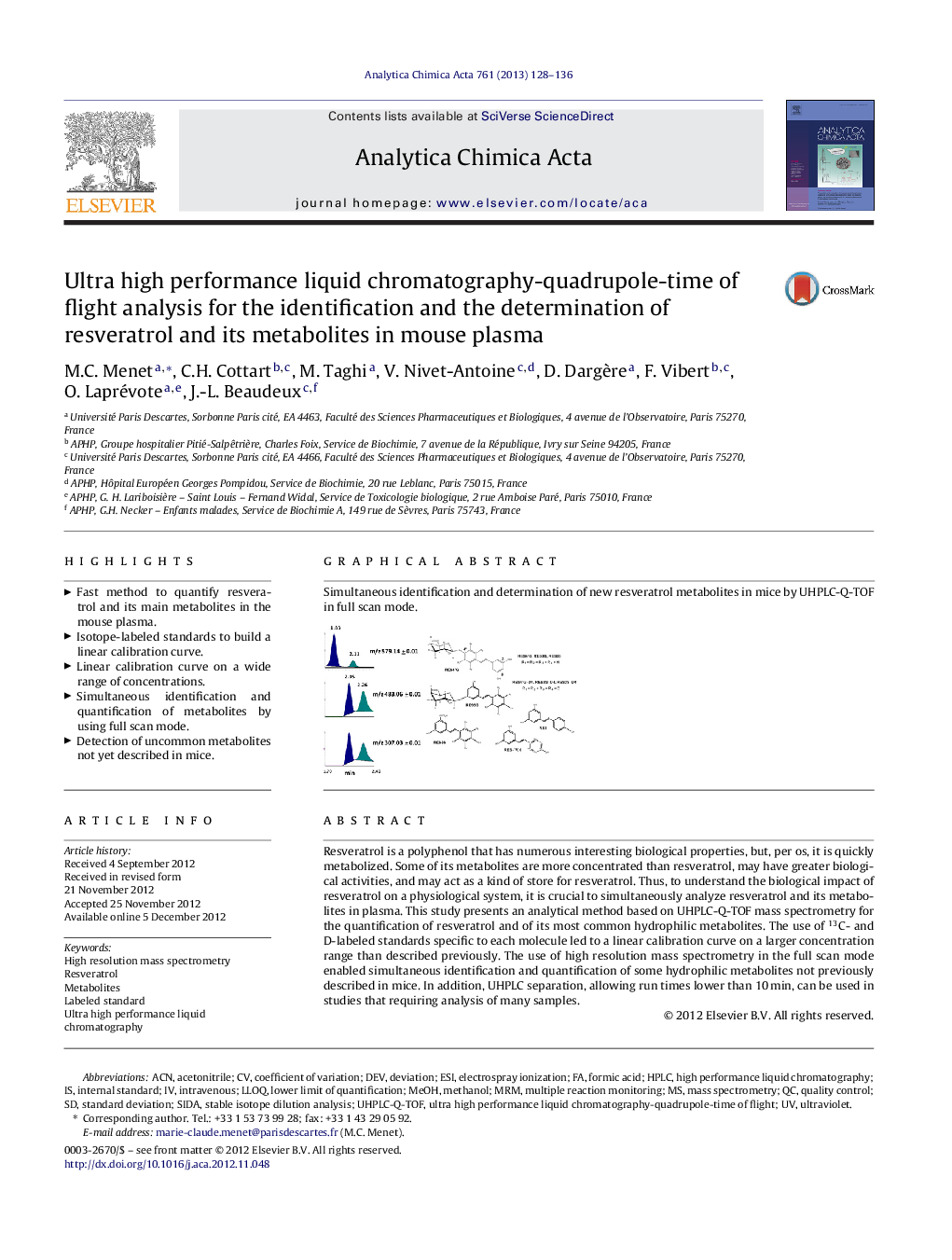| Article ID | Journal | Published Year | Pages | File Type |
|---|---|---|---|---|
| 1165181 | Analytica Chimica Acta | 2013 | 9 Pages |
Resveratrol is a polyphenol that has numerous interesting biological properties, but, per os, it is quickly metabolized. Some of its metabolites are more concentrated than resveratrol, may have greater biological activities, and may act as a kind of store for resveratrol. Thus, to understand the biological impact of resveratrol on a physiological system, it is crucial to simultaneously analyze resveratrol and its metabolites in plasma. This study presents an analytical method based on UHPLC-Q-TOF mass spectrometry for the quantification of resveratrol and of its most common hydrophilic metabolites. The use of 13C- and D-labeled standards specific to each molecule led to a linear calibration curve on a larger concentration range than described previously. The use of high resolution mass spectrometry in the full scan mode enabled simultaneous identification and quantification of some hydrophilic metabolites not previously described in mice. In addition, UHPLC separation, allowing run times lower than 10 min, can be used in studies that requiring analysis of many samples.
Graphical abstractSimultaneous identification and determination of new resveratrol metabolites in mice by UHPLC-Q-TOF in full scan mode.Figure optionsDownload full-size imageDownload as PowerPoint slideHighlights► Fast method to quantify resveratrol and its main metabolites in the mouse plasma. ► Isotope-labeled standards to build a linear calibration curve. ► Linear calibration curve on a wide range of concentrations. ► Simultaneous identification and quantification of metabolites by using full scan mode. ► Detection of uncommon metabolites not yet described in mice.
